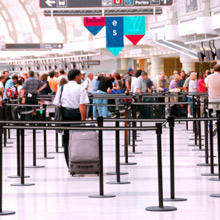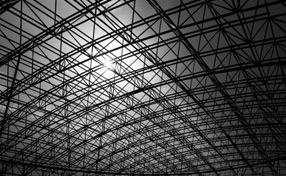 |
| Migrate to a better system by adopting an all-IP video surveillance solution |
With declining prices for IP cameras and advancements in video compression technology such as the latest H.264 compression standard, IP video surveillance is increasingly becoming the preferred security solution. The convergence of voice, video and data in the world of surveillance has truly arrived, a fact amply highlighted by the projected growth of the network video market to over $2.6 billion by the end of this year. Simon Nash, Senior Marketing Manager at Sony Europe lists 5 key benefits of a complete IP video surveillance solution.
Maximise the value of your network infrastructure investmentAll-IP video security makes optimum use of your investment in network infrastructure, and is simpler, more elegant and accessible to users across the enterprise. Often, it also is more cost-effective than a conventional video surveillance system with analogue security cameras and digital video recorders (DVRs).
By combining the use of IP cameras, video management software (VMS) running on industry standard servers and network-area storage systems, you can maximise the value of your investment in network infrastructure and standardise on servers across your enterprise. This leads to significantly improved efficiencies in training, administration and support for monitoring and managing the surveillance activity.
Improve response time by alerting security staff in real-timeTake, for example, a university campus with several buildings under construction. An IP network solution can take advantage of the cost efficiencies of a converged voice, video and data system in the new buildings and continue to leverage its investment in legacy video security infrastructure in existing buildings. Common VMS software can be used to operate the resulting hybrid video surveillance system.
A full-IP configuration might be the most cost-effective solution if your requirement is for very high-resolution video |
There is no single, IP video solution or ideal configuration. For example, if you have a distributed organisation comprising of numerous sites across a large geographic area, a solution using coaxial cable and networked video recorders may be more prudent for recording surveillance video at relatively low frame rates. On the other hand, a full-IP configuration might be the most cost-effective solution if your requirement is for very high-resolution video or the intelligence available from advanced video analytic applications.
IP video also includes other benefits such as the ability to access remote locations via your LAN or WAN and centralising security monitoring (i.e. carry out remote monitoring) instead of stationing guards at each site. Moreover, another benefit is that since the VMS software will likely be running on industry-standard servers, an all-IP security system can be managed easily by your existing IT staff.
IP surveillance solution has applications beyond security
 |
| IP video has other practical uses such as altering staff to open another check-in station when queues get too long |
An IP video environment enables you to take advantage of video for uses other than security, such as in supporting marketing activities and operational management. For example, in an airport terminal, supervisors can employ a queue length monitoring analytic to identify when passenger line-ups exceed a predetermined threshold and open another check-in station to better serve customers.
Another advantage of hybrid and all-IP video surveillance systems is the ability to streamline the management of user profiles and permissions across the enterprise. Integrating VMS software with applications such as Microsoft Active Directory allows you to set up user permissions for your video surveillance system and other IT security applications. If someone leaves the organisation, takes a sabbatical or gets married and changes their name, you don't have to remember to delete or update user profiles and permissions in multiple databases. This, in turn, eliminates errors and tightens security.
Protecting the corporate network - effect of high - res video
Modern IP solutions can address the potential concerns about the impact of all this high-resolution video on the corporate network. Advanced compression technologies, such as H.264, reduce bandwidth and storage requirements considerably.
Applications suitable for IP video solutions
It is important to remember that all-IP video is not for everyone. It is most suitable in expansive, greenfield applications that require a large numbers of surveillance cameras. For example, using all-IP video security in University campuses, shopping and entertainment complexes, hospitals, hotels, airports, big box stores, warehouses and office towers should be a ‘no-brainer'.
At the same time, bringing video security onto your IP network is far from an all-or-nothing proposition. Using advanced video security technology; you can evolve toward an all-IP configuration at a pace that makes sense for your environment.
 | Simon Nash |



















